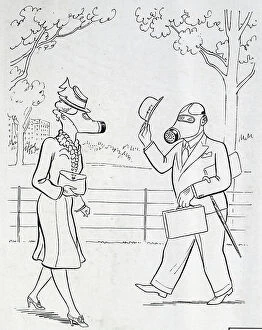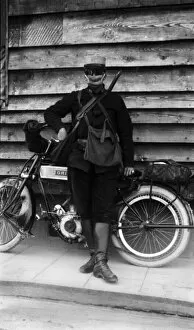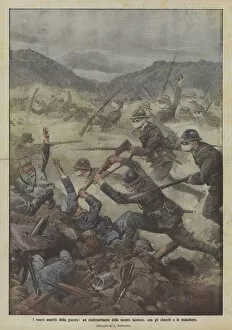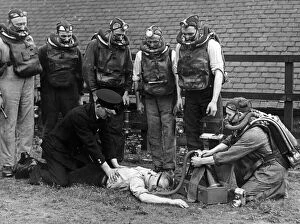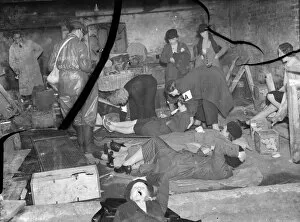Gasmasks Collection
Wearing gas masks has been a crucial part of history, protecting individuals in hazardous environments
For sale as Licensed Images
Choose your image, Select your licence and Download the media
Wearing gas masks has been a crucial part of history, protecting individuals in hazardous environments. In 1944, amidst the chaos of war, a brave soul dons his mask to stay on the job. The image captures the resilience and determination that defined that era. In Alsdorf, near the Belgian border, an alarming outbreak has left devastation in its wake. A terrifying scene unfolds as people are buried beneath rubble and debris. Only those wearing gas masks stand a chance against this invisible threat. During World War I in 1915, a soldier is captured in black and white, showcasing the early days of gas mask usage. It serves as a reminder of how warfare evolved with new aspects like helmets and masks becoming essential for survival. The Germans' conquest at Ypres during that dreadful war was not achieved solely through weapons but also by employing asphyxiating gases. This color lithograph depicts the sinister nature of this "bad war" where trenches were conquered using suffocating agents rather than traditional means. A British soldier proudly graces the front cover of The Illustrated London magazine wearing a new gas mask. This symbolizes progress and innovation in protecting our troops from deadly chemicals on the battlefield. Moving forward to 1940, we witness a demonstration of an Anti-Aircraft Gun on Bristol Downs. Amidst rising tensions during World War II, these guns provided defense against aerial attacks while soldiers stood prepared with their trusty gas masks nearby. Bob Nesbitt and Norman Bell train diligently inside Ashington's heat and humidity chamber to acclimate themselves to extreme conditions they may face while wearing their protective gear underground. These miners understand that being equipped with proper safety measures can mean life or death when working deep within coal mines. Members of the mines fire and rescue service remain ever-ready at any given moment to respond swiftly to emergencies underground. Their dedication ensures miners have someone watching over them even in perilous situations where oxygen becomes scarce.

